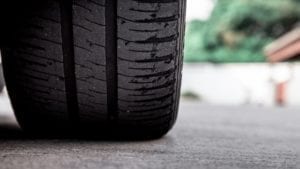Pollution from tyre wear can be 1,000 times worse than what comes out of a car’s exhaust, an independent vehicle emissions testing organisation has found.
According to Emissions Analytics, harmful particle matter from tyres – and also brakes – is increasing due to the increasing popularity of large, heavy vehicles such as SUVs, and growing demand for EVs, which are heavier than standard cars because of their batteries.
While new cars now emit very little in the way of particulate matter, there is growing concern around non-exhaust emissions (NEE), said Emissions Analytics.
NEE are particles released into the air from brake wear, tyre wear, road surface wear and resuspension of road dust during on-road vehicle usage.
No legislation is in place to limit or reduce NEE.
Emissions Analytics said that NEEs currently constitute the majority of primary particulate matter from road transport, 60% of PM2.5 and 73% of PM10 – and in its 2019 report Non-Exhaust Emissions from Road Traffic by the UK government’s Air Quality Expert Group (AQEG), it recommended that NEE are immediately recognised as a source of ambient concentrations of airborne particulate matter, even for vehicles with zero exhaust emissions of particles – such as EVs.

Emissions Analytics performed initial tyre wear testing. Using a popular family hatchback running on brand-new, correctly inflated tyres, it found that the car emitted 5.8g/km of particles.
Compared with regulated exhaust emission limits of 4.5mg/km, the tyre wear emission is higher by a factor of over 1,000.
Emissions Analytics noted that this could be even higher if the vehicle had tyres that were underinflated, or the road surfaces used for the test were rougher, or the tyres used were from a budget range.
Nick Molden, CEO of Emissions Analytics, said: “The challenge to the industry and regulators is an almost complete black hole of consumer information, undone by frankly out of date regulations still preoccupied with exhaust emissions.
“In the short term, fitting higher quality tyres is one way to reduce these NEEs and to always have tyres inflated to the correct level.
“Ultimately, though, the car industry may have to find ways to reduce vehicle weight too.
“What is without doubt on the horizon is much-needed regulation to combat this problem.
“Whether that leads to specific types of low emission, harder wearing tyres is not for us to say – but change has to come.”





